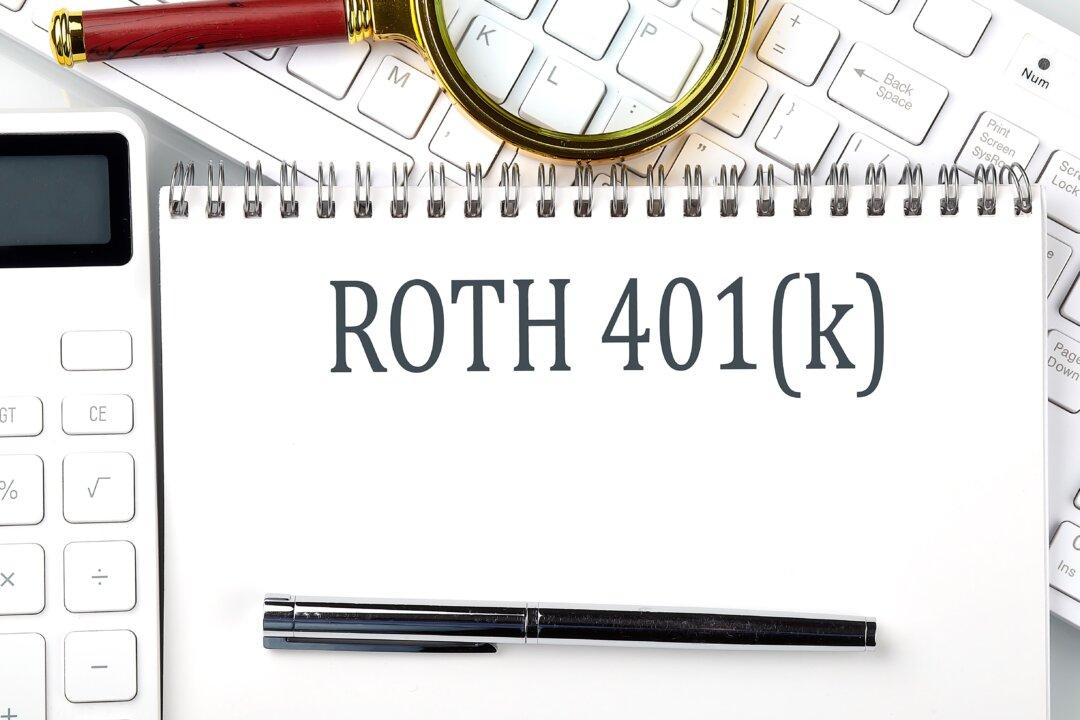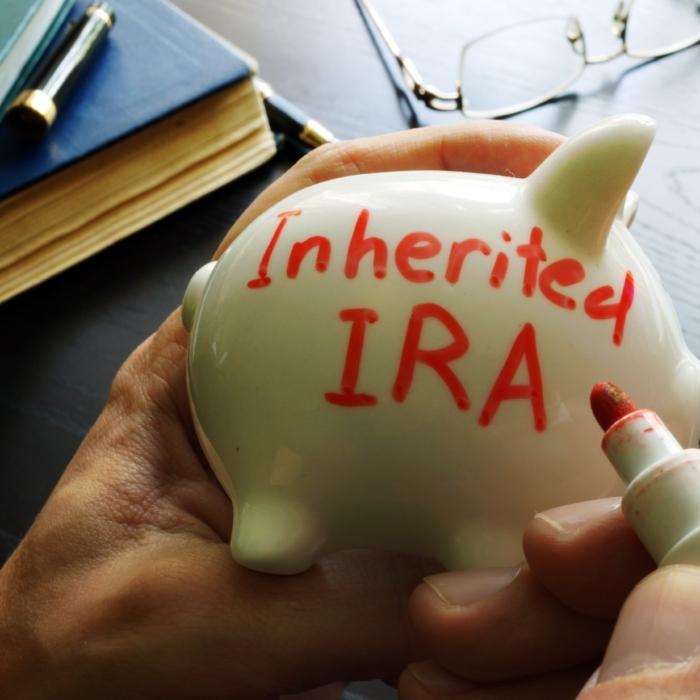If you’re saving for retirement, you’re probably familiar with traditional 401(k) plans. These employer-sponsored plans allow you to save for retirement with pretax dollars, letting you maximize the dollars you contribute today.
Participation is voluntary, and if you take part, you agree to automatic payroll deductions that are moved into a special retirement account. Some companies even match employee contributions up to a certain amount.

Besides traditional 401(k)s, many employers also offer a Roth version.
So, what is a Roth 401(k)? Is there an income limit for Roth 401(k), and where can I get information on how to set up a Roth 401(k) plan?
These and more questions will be answered below.
What Is a Roth 401(k)?
Retirement rules were updated in 2023 to allow more retirement plans the chance to offer Roth 401(k) contributions.
A Roth 401(k) is an employer-sponsored retirement savings vehicle that uses post-tax dollars.
Unlike a traditional 401(k) where you’d contribute pretax dollars, a Roth 401(k) lets you pay taxes first and make tax-free withdrawals in retirement.
Income earned on the account from interest, capital gains, or dividends is tax-free.
When Did Roth 401(k) Become Available?
While employees have been using the traditional 401(k) since 1978, the Roth 401(k) only became available on Jan 1, 2006.
The Roth 401(k) was authorized by Congress as a tax-advantaged retirement plan to encourage workers to save for their retirement. Created by a provision of the 2001 Economic Growth and Tax Relief Reconciliation Act, it combines the top features of a traditional 401(k) and a Roth individual retirement account (IRA).
Even though the ability to contribute to a Roth 401(k) was initially set to expire at the end of 2010, it was cemented by the Pension Protection Act of 2006.
Is There an Income Limit for Roth 401(k)?
Contributing to a Roth 401(k) account has no income limits.
You can fund a Roth 401(k) even if you bring home a million-dollar salary. This offers advantages to high-income individuals.
Roth 401(k) Contribution Limits
The Internal Revenue Service limits the sum you can contribute to this tax-advantaged account yearly based on inflation.
For 2023, you can contribute to your account up to $22,500, or $30,000 if you’re over 50. The IRS increased the contribution limit by $2,000 from last year and catch-up contributions by $500.
Employer 401(k) matching/non-matching contributions don’t count toward your individual contribution limit.
Note that if your income is very low, you can’t contribute more than your taxable income for that calendar year.
Can I Contribute to Both a Roth 401(k) and a Traditional 401(k)?
In select situations, you can contribute to both a Roth and a traditional 401(k) to hedge your bets on future tax rates. It mostly depends on the options available to you.
However, your combined contributions cannot exceed the annual $22,500 limit, or $31,000 for workers 50 and older, during the calendar year. This rule is helpful to remember if you want to contribute to both types.
How to Set Up a Roth 401(k) Plan
A Roth 401(k) plan is only available through your employer, which means you cannot set one up on your own.
After signing up, you contribute money to the account through withdrawals from your paycheck. The money is put into investment funds comprising stocks, bonds, and other similar assets.
Your employer may then match contributions and set vesting schedules to offer additional benefits.
While your funds are in the Roth 401(k), they will enjoy special tax benefits (growing without being taxed).
Pros and Cons of Roth 401(k)
Pros:- There are no income limits.
- Earnings grow tax-free.
- You have access to a much higher contribution limit than with an IRA.
- Matching contributions from the sponsoring company.
- Roth 401(k) allows for tax-free withdrawals, meaning you won’t have to worry about the IRS snagging its share.
- It’s possible to roll over to a Roth IRA without cost.
- A little more immediate financial pain.
- Contributions do not reduce your taxable income.
More Income Now vs. Later
Traditional wisdom is that you are likely to be in a lower tax bracket when you retire. It makes sense, therefore, to avoid paying taxes on your 401(k) contributions today and pay the taxes when you withdraw your money in retirement.
You, however, open yourself up to risk if all your retirement savings are in a traditional 401(k) when you transition to retirement.
There’s a possibility that you will actually earn more in retirement than you do today. You can lessen some of that risk by contributing to a Roth 401(k) account and paying taxes today.
Your Tax Rates Now vs. Later
Tax brackets and tax rates can change.
Tax-free withdrawals mean your retirement savings stay relatively unaffected by future tax bracket adjustments.
Other Factors to Consider When Opening a Roth 401(k)
There are a few other factors that you should consider when deciding to open a Roth 401(k):
- Your employer may not offer the Roth 401(k). It’s voluntary for employers to offer a Roth 401(k), and considering the high cost of setting up a tracking system to segregate Roth assets from your employer’s current plan, they may choose not to do it.
- Roth 401(k) participants are subject to required minimum distributions (RMDs). This forces you to take distributions even if you don’t need or want them.
- You can avoid the above distribution by rolling over to a Roth IRA, but doing so is an uphill task, and the rules can change at any time to prohibit such transfers.
- It’s advisable to have both a Roth 401(k) and a traditional 401(k) as they will help you manage your taxable income in retirement.
Roth 401(k) vs. Roth IRA
Both Roth IRAs and Roth 401(k)s are funded by after-tax contributions, but there are key differences.
You have less flexibility with a Roth 401(k) because you must use the broker or financial institution your employer selects, and your investment options may be limited.
You’re eligible, however, for matching contributions with a Roth 401(k)—typically between 2–5 percent of your paycheck.
On the other hand, a Roth IRA is a self-managed account. You get to choose who holds your account, and you typically have many more investment options to choose from.
The downside is that there’s no contribution matching from an outside source.
Another difference is the contribution limits. The 2023 Roth IRA contribution limit is $6,500, with savers 50 and older enjoying additional catch-up contributions of $1,000. As noted above, Roth 401(k) annual contribution limits for 2023 are much higher.
Roth 401(k) contributions can be made by any employee, regardless of income, whereas there are income thresholds that limit who can make contributions to a Roth IRA.
Also, a Roth IRA isn’t subject to RMDs. You can leave the money in your account if you decide to do so.
Roth 401(k) vs. Traditional 401(k)
The main difference between these two is how they’re taxed.
With a traditional 401(k), your funds grow tax-deferred, meaning you will get a tax break now, but you will owe Uncle Sam when you start withdrawals for retirement. This also includes taxes on any employer contributions (employer match).
With a Roth 401(k), your monthly contributions are taxed upfront. But when you want to access your money in retirement, you won’t owe the IRS any taxes on those contributions or their growth. You’ll only owe taxes on any employer contributions.
The other major difference is access. With a traditional 401(k), you can start receiving distributions penalty-free at age 59½, regardless of how long you’ve had your 401(k).
With a Roth 401(k), if you have held the account for at least five years, you can start withdrawing your hard-earned money tax and penalty-free once you reach age 59½.
Roth 401(k) Withdrawal Guidelines
Withdrawals of any contributions and earnings aren’t taxed provided the withdrawal is a qualified distribution.
This means the following criteria must be met:
- You must have used the Roth 401(k) account for at least five years.
- The withdrawal must have occurred when an account holder reaches at least age 59½, on or after the demise of an account owner, or due to a disability.
The IRS requires that as of Jan. 1, 2023, you must start taking RMDs from your Roth 401(k) account beginning at your retirement or at age 73, whichever is later.
It’s worth mentioning, however, that if you were 72 in 2022 or 70½ before Jan. 1, 2020, you can keep taking your RMDs as scheduled. The only exception is you’re still employed at the company that holds the plan and you aren’t a 5 percent (or more) owner of the business sponsoring the plan.
You can, however, avoid RMDs by simply rolling over into a Roth IRA at retirement. That may, however, be a negative, as every withdrawal decreases the amount of money that’s growing tax-free.
The Bottom Line on Roth 401(k) Contribution
A Roth 401(k) plan allows you to start investing for your retirement.
Unlike traditional 401(k) contributions, the IRS includes your Roth 401(k) contributions in your taxable income at the time they’re made.
Whether a Roth 401(k) is right for you depends on your financial circumstances. If you think you’ll be in a higher tax bracket upon retiring, a Roth 401(k) account might be right for you. In that scenario, you’d pay lower taxes now on your current contributions and zero taxes on your investments and gains when you begin making qualified distributions.
If you’re making more money today than you project to make in retirement, it makes the most sense to make traditional 401(k) contributions.
And while everyone’s situation is different, it generally makes sense to contribute to both a Roth 401(k) and a traditional 401(k). Doing this allows you to get some tax breaks today while also providing future flexibility to manage your taxes in retirement.
Please remember this article is only for informational purposes and is not a substitute for real-life advice. As with any significant money decision, consider consulting a trusted financial advisor for more guidance.
FAQs
1. Are Roth 401(k) RMD taxable?
No, unless they’re taken before age 59½ where they may be subject to a 10 percent federal income tax penalty.
2. What are Roth IRA and Roth 401(k) combined contribution limits?
The 2023 Roth IRA contribution limits are $6,500 for under age 50 and $7,500 if 50 or older.
The 2023 Roth 401(k) contribution limits are $22,500 for under age 50 and $30,000 if 50 or older.
The Epoch Times copyright © 2023. The views and opinions expressed are those of the authors. They are meant for general informational purposes only and should not be construed or interpreted as a recommendation or solicitation. The Epoch Times does not provide investment, tax, legal, financial planning, estate planning, or any other personal finance advice. The Epoch Times holds no liability for the accuracy or timeliness of the information provided.







